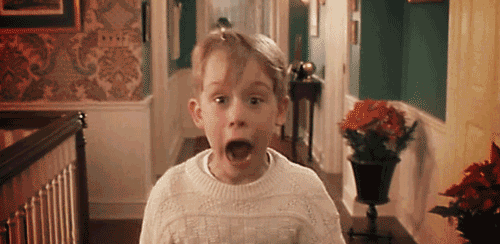Both Prince William and Prince Harry have spoken openly about their own mental health and the impact of losing their mother and growing up in the public eye. Together they have formed a charity to support young people with mental health problems. They aim to remove a stigma which still remains in the 21st century.
This musing goes back to another royal with mental health problems, this time in the 15th century. Problems whose diagnosis we still can’t identify and which led to his downfall and changed the course of history in England.
It’s 1453 and to say that King Henry VI of England has a lot on his plate would be an understatement. The Battle of Castillon on 17th July effectively ends the Hundred Years War with France and sees Henry lose the last part of an empire which once had stretched from the Channel to the Pyrenees. At home this defeat stoked the embers of rebellion. The War of the Roses is imminent. For Henry defeat was a personal blow too. He was the son of Henry V; war hero of Agincourt. He succeeded the throne in 1422 aged only nine months after his father’s sudden death and by the time he was deemed old enough to rule in his own right in 1437 the war with France had already turned against England. Henry was unable to live up to his father’s legend and reverse the slide putting his reign under increasing pressure from the very beginning.
King Henry VI
Henry did have one thing going for him, his wife Margaret of Anjou whom he married in 1445. By the summer of 1453 she was pregnant. Strong willed and volatile she was far more willing than Henry to stand firm and make decisions. Henry deplored violence and would rather spare traitors and cut back himself instead of raising taxes. Royal duties were a distraction from his preferred activities; praying and reading religious texts. Admirable, but not ideal when revolution is in the air. As Henry began to earn his reputation as one of England’s weakest ever kings Margaret would come to be the de facto monarch. He would soon need her even more.
Margaret of Anjou
10th August 1453 at the royal lodge in Clarendon near Salisbury. Henry receives news of the defeat at Castillon and the deaths of one of his most faithful and talented commanders John Talbot, Earl of Shrewsbury and his son. Suddenly he falls unwell. Without warning he acts unaware of his surroundings, unresponsive to anyone and anything around him and seemingly unable to even move. With England on the verge of civil war his entourage are understandably keen to keep this under wraps and hope it passes. It doesn’t. Margaret stays in London and the royal court continues as normal. In early October, accepting how ill the king is, his court moves him gradually to Windsor. On 13th October Margaret goes into labour and is delivered of a baby boy, Edward. Henry is informed of the birth of his heir but doesn’t react. In the New Year Margaret brings Prince Edward to Henry. Both her and the Duke of Buckingham beg Henry to bless the young prince. Other than moving his eyes he does nothing. At the time he has to be fed and guided around the palace by his attendants.
One 22nd March 1454 John Kemp, the Archbishop of Canterbury and Lord Chancellor of England dies. The news is given to Henry by a delegation of bishops and noblemen in the hope he will wake and announce a successor. The group report back to Parliament that the king remained unresponsive. That same month a commission sends a group of doctors to treat Henry. They are provided with a list of possible treatments including enemas, head purging (heat applied to the head), laxatives and ointments. Whatever treatment they chose nothing works.
As suddenly as Henry fell ill he recovered after nearly 18 months on Christmas Day 1455. On 30th December Margaret brought Edward to Henry. The king was delighted and acted as though he was meeting the prince for the first time. Margaret was overjoyed, but with an agenda. During Henry’s illness Richard of York had claimed the title of Lord Protector and on the death of John Kemp placed his brother-in-law Richard Neville as the new Chancellor, a move Margaret opposed. Edmund Duke of Somerset, a rival of Richard’s and an ally of Margaret’s, was sent to the Tower of London. Richard was a relative of Henry’s and had a claim to throne. A claim scuppered by the birth of Prince Edward. The life of her son was in jeopardy. With Henry now well again Margaret persuaded him to remove Richard from favour and restore Somerset from the Tower. So intensified the resentment. Richard would begin to grow his support. The Wars of the Roses sprang from these personal rivalries. Had Henry not been unwell it’s possible the Wars of the Roses could have been avoided.
So what was Henry’s illness? Much has been made of a supposed family history of mental health problems. His maternal grandfather King Charles VI of France suffered recurrent bouts of violence and disorientation, not recognising his family or remember he was king. These bouts lasted months at a time. It is possible they were due to mental illness such as bipolar disorder or schizophrenia. However, they seemed to follow a fever and seizures he suffered in 1392. Potentially Charles’s ‘madness’ may have been due to an infection such as encephalitis rather than psychiatric illness.
The length of Henry’s illness and sudden improvement with no apparent ill effect make schizophrenia or catatonic schizophrenia unlikely. The length of illness again along with the loss of awareness and memory make a depressive illness unlikely. There’s no record of him being similarly ill at another time of his life. It is is possible he suffered a severe dissociative disorder due to stress. Of course, it is completely plausible that contemporary accounts are inaccurate or incomplete, never mind the fact that it is impossible to make a diagnosis of a patient you haven’t met, never mind one who died six centuries ago.
Henry would cling to the throne until he was deposed in 1461, replaced by Edward IV, son of Richard of York. Henry was imprisoned and Margaret fled to Scotland with their son. But she wasn’t finished. She would reach out to Richard Neville and form an alliance based on an arranged marriage between her son and his daughter. Neville would force out Edward IV and reinstate Henry in 1470. It was to be a short return however. Edward IV raised an army and in the ensuing conflict both Richard Neville and then Henry’s son died in combat in early 1471. Henry once again was imprisoned in the Tower of London. He died mysteriously, possibly murdered on the orders of Edward IV, in 1471. His mental health was blamed, with supporters of Edward IV claiming he died of a broken heart at the loss of his son. Margaret was also imprisoned until she was ransomed by King Louis XI of France in 1475. She lived out her days in France until she died in 1482.
King as long as he could remember, losing his kingdom and facing potential rebellion and death it’s no wonder Henry’s mental health suffered. But what I think is remarkable is that at a time of no mental health knowledge his court was able to keep him fed and watered and otherwise healthy for 18 months. Even in the time since their mother died in 1997 Princes William and Harry are showing how far we have come in appreciating mental health. Their ancestor King Henry VI is a powerful example of the impact of mental health.
Thanks for reading
- Jamie





